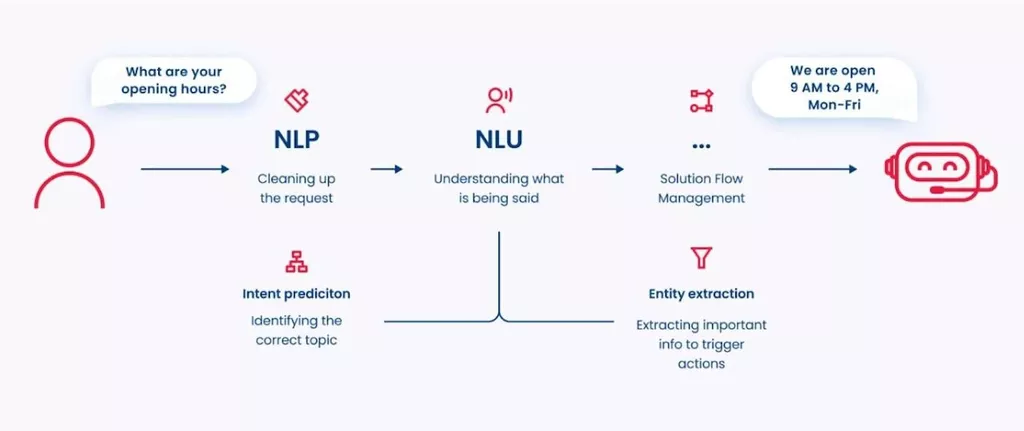Software development
Announcing DORA 2021 Accelerate State of DevOps report Google Cloud Blog
Organizations in the higher performance groups not only have better software delivery, they often achieve better outcomes at an organizational level. Each report groups respondents to the annual survey, meaning industry trends show alongside demographic changes. To date, DORA is the best way to visualize and measure the performance of engineering and DevOps teams. In order to unleash the full value that software can deliver to the customer, DORA metrics need to be part of all value stream management efforts. Companies who streamline their development and delivery process increase the value software delivers and are more successful in the long run.

We can confidently say that as the industry continues to accelerate its adoption of DevOps principles teams see meaningful benefits as a result. In addition to measuring the impact of DevOps adoption on software delivery performance, this year’s DORA report also revealed many other new trends. Change Failure Rate is a particularly valuable metric because it can prevent a team from being misled by the total number of failures they encounter.
Jira Software
Alternately, if performance is low, teams will see early signs of progress before the buckets are updated. There is a scheme for continual improvement, the fundamentals are very simple and can be applied at all levels, even for biometric photo mobile development. To improve deployment frequency, do smaller code changes and frequent deployments/deliveries. In this article, we will explore what engineering metrics are and how they can help organizations deliver better results, enhance productivity, and improve processes. The ability to have a fluid definition of teams using multiple criteria such as organization, project, issue tag, and such is critical because ultimately metrics have to be measured at the level where change can happen to improve it.

Many organizations that adopt Azure DevOps use Jenkins for just their CI-CD needs. For engineering teams, disruption to the business can have a significant impact on the ability to deliver and meet goals. These disruptions are often a result of reprioritization and budget changes on an organizational level, and are amplified during times of transition or economic instability. Engineering teams generally strive to deploy as quickly and frequently as possible, getting new features into the hands of users to improve customer retention and stay ahead of the competition. More successful DevOps teams deliver smaller deployments more frequently, rather than batching everything up into a larger release that is deployed during a fixed window. High-performing teams deploy at least once a week, while teams at the top of their game — peak performers — deploy multiple times per day.
Lead Time for Changes
This brought added visibility into their system which helped improve measurement and analytics. Time to restore service measures the time needed to restore services to the level they were previously, in case of an incident. Security can no longer be an afterthought—it must be integrated throughout every stage of the software development lifecycle to build a secure software supply chain.
- The concept derives from Lean manufacturing principles, and it’s best compatible with DevOps practices.
- Teams that prioritize both delivery and operational excellence report the highest organizational performance.
- It would be simple and straightforward to show daily deployment volume or to grab the average number of deployments per week, but the metric is deployment frequency, not volume.
- This trends towards larger batches deployed less often and feedback that comes far too late.
- You also need to know when the incident was created and when a deployment resolved said incident.
- Understand the modern approach to practicing chaos engineering where the efforts to build resilience are inserted into all stages of your software development life cycle through automated chaos experiments.
Get a comprehensive view of the DevOps industry, providing actionable guidance for organizations of all sizes. Instead, one may consider building release trains and shipping at regular intervals. This approach will allow the team to deploy more often without overwhelming your team members.
Driving visibility into the DevOps lifecycle
Change Failure Rate – Rate of deployment failures in production that require immediate remedy. This can manifest itself in dashboards of your DORA metrics that are visible to everyone in the office, in Slack or at company-wide meetings as a regular point of discussion. The key point here is empowering your teams with these systems and metrics in place as guardrails to deliver the best product possible. DORA metrics are a great way to get a snapshot of your team’s overall software delivery performance, but with any form of measurement, there are caveats to keep in mind. 4/ The DORA Metrics only focus on your engineering teams’ performance and can’t give you a view of your entire organization’s success. But you can coordinate them with flow metrics that measure how your activities produce business value and flow efficiency when going through a value stream.

You also need to know when the incident was created and when a deployment resolved said incident. Similar to the last metric, this data could come from any incident management system. Four Keys categorizes events into Changes, Deployments, and Incidents using `WHERE` statements, and normalizes and transforms the data with the `SELECT` statement. The precise definition of a change, deployment, or incident depends on a team’s business requirements, making it all the more important to have a flexible way to include or exclude additional events. It is services that serve as the basis of an innovative economy and one of the main factors of successful international economic, innovation, technological, and humanitarian cooperation.
The Four Key DORA Metrics and Industry Values That Define Performance
Quick responses result in less downtime and satisfied customers with the software, and less frustration with dysfunctionalities. In order to improve their performance in regards to MTTR, DevOps teams have to practice continuous monitoring and prioritize recovery when a failure happens. It is also helpful to establish a go-to action plan for an immediate response to a failure. To get the most out of DORA metrics, engineering leads must know their organization and teams and harness that knowledge to guide their goals and determine how to effectively invest their resources. As with lead time for changes, you don’t want to implement sudden changes at the expense of a quality solution.

Your work-tracking tools may have a feature to link a bug request to the original change. Otherwise, you may be able to add a custom field to retrospectively devops dora metrics mark a change as ‘failed’ to use in reporting. You can measure this with your deployment automation tool, which sees the deployment rate to Production.
How to improve time to restore service
The best way to enhance DF is to ship a bunch of small changes, which has a few upsides. If deployment frequency is high, it might reveal bottlenecks in the development process or indicate https://www.globalcloudteam.com/ that projects are too complex. Shipping often means the team is constantly perfecting their service and, if there is a problem with the code, it’s easier to find and remedy the issue.
If you’re using a non-built-in variable like ’$_MERGE_TIME’ payload binding in your config file, you need to specify the variable map when you setup the cloud build trigger to the $(push.repository.pushed_at) value. In this guide, we’re highlighting who DORA is, what the four DORA metrics are, and the pros and cons of using them. However, if the entirety of your DevOps team is only 1 person and you don’t have all your systems in place for CI/CD for instance, then it might not be a good use of time to start implementing DORA at your organization.
Operational performance
This metric does not factor in changes that did not make it to production due to failing testing before release. The frequency of releases depends on a number of factors, such as the tasks given or the size of the deployment. Teams that follow DevOps best practices usually work with tasks broken into smaller batch sizes, so the deployments will be more frequent. Depending on the task at hand, some teams may deliver once a week, while high-performing ones have deployments a few times a day.